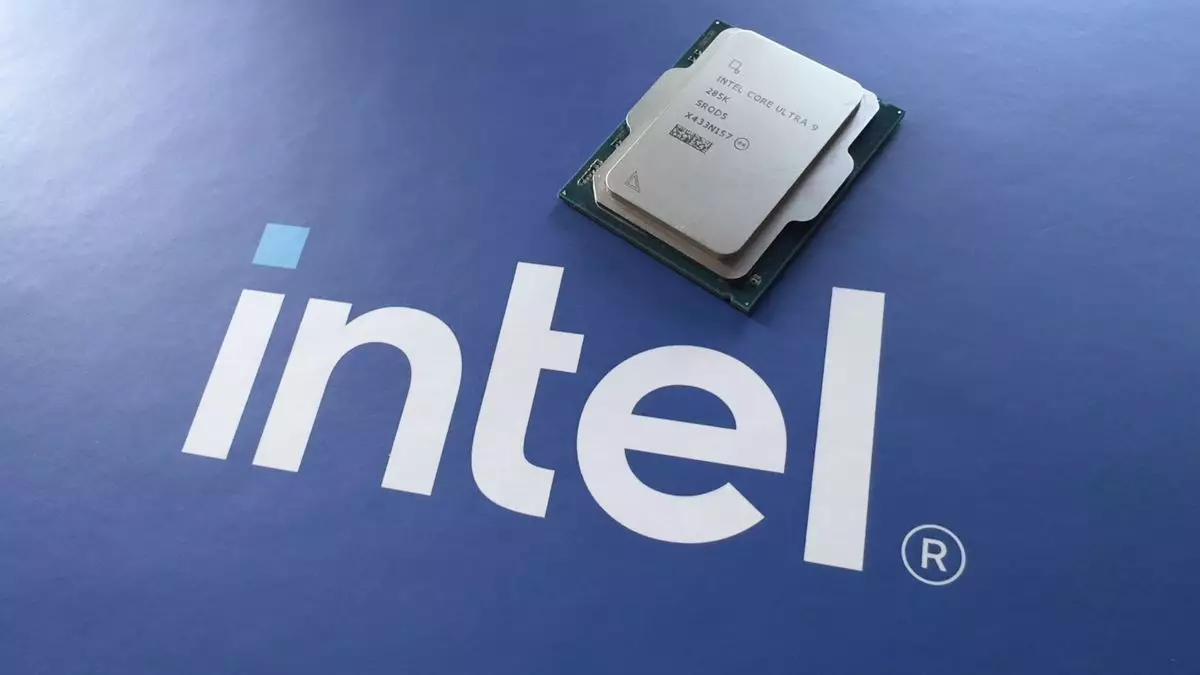The recent launch of Intel’s Arrow Lake processors has sparked a blend of excitement and skepticism in the tech community, primarily due to the unexpected performance outcomes that diverged significantly from the company’s projections. In a candid discussion, Intel’s Vice President Robert Hallock acknowledged these discrepancies and presented insights into the upcoming solutions that the company plans to deploy. However, an analysis of the situation reveals that overcoming these obstacles may not be as straightforward as Intel hopes, especially regarding gaming performance.
During a recent interview, Hallock outlined several issues that are believed to have contributed to the performance shortcomings observed in Arrow Lake processors, noting that both operating system and BIOS-level complications were culprits. The admitted performance gap not only calls into question Intel’s internal benchmarks but also raises concerns about how these processors measure up against their predecessors. The phrase “not what we expected” resonates deeply as it hints at a level of complacency that the company might have felt prior to the launch. Despite promising enhancements on the horizon, users shouldn’t anticipate miraculous improvements in performance shortly.
Critics argue that if Intel’s internal assessments show figures closely matching those of third-party reviews—albeit with slight variances—this suggests that the underlying architecture may not be wholly optimized for gaming applications. The situation becomes murky as users begin to wonder if the promised fixes will render any significant difference in everyday usage scenarios, or if they will merely serve as band-aids for deeper architectural flaws.
Efforts to enhance the Arrow Lake experience through overclocking and RAM adjustments have returned lackluster results. Initial tests showed that even the most effective overclocking configurations, which involved tweaking the Core Ultra 200S processor and utilizing high-speed RAM setups, only produced negligible gains in performance. For example, despite being able to achieve a substantial increase in several clock speeds, the overall mean frame rate showed a meager 2% increase, while 1% low performance recorded a shocking 7% drop in certain titles.
Given that gamers frequently seek performance enhancements, the paltry returns on overclocking underscore limitations inherent within the Arrow Lake architecture. While certain games like Cyberpunk 2077 and Baldur’s Gate 3 did show improvement, the associated increase in power consumption by up to 26% poses another set of concerns for gamers prioritizing efficiency. In this context, gamers need to weigh these minor performance upgrades against the additional power draw, which may not be acceptable for those looking for efficient gaming setups.
Intel’s Application Optimization (APO) tool is presented as a solution to manage thread execution on the hybrid architecture of Arrow Lake. However, tests conducted on popular titles reveal mixed results. While games like Metro Exodus had a slight uptick in performance thanks to the APO tool, others like Cyberpunk 2077 remained unimproved. This inconsistency raises further questions about the adaptability of Intel’s optimization solutions and their overall effectiveness in enhancing user experience.
The revelations from testing emphasize that relying solely on software updates or optimization tools to bridge the performance gap could be misguided. While Intel hopes that its upcoming Windows and BIOS updates will provide relief, there is skepticism regarding their potential impact, especially when compared historically to AMD’s advancements.
The Arrow Lake architecture inevitably draws comparisons to AMD’s Ryzen 3000 series, particularly concerning design and memory latency. Although both Intel and AMD faced similar challenges initially, AMD has undergone several refinements and improvements across multiple generations, notably with its 3D V-Cache technology, which significantly reduces latency issues. Intel may find itself catching up to a well-established competitor that has already capitalized on extensive advancements in this area.
Furthermore, the energy efficiency of Arrow Lake presents a silver lining, particularly when juxtaposed with its predecessor, Raptor Lake. While this can be a selling point for content creators who prioritize performance without exorbitant power consumption, gamers may not find this feature sufficient to sway their purchasing decisions amidst the competitive landscape dominated by AMD’s well-received offerings.
As the tech community anticipates further developments from Intel, the company’s pressing task will be to prove that Arrow Lake can transform into a formidable gaming CPU. While several features hold promise, the product’s initial launch and performance metrics serve as cautionary tales. The competition continues to heat up, exemplified by AMD’s phenomenal Ryzen 7 9800X3D sales, positioning Intel in a precarious position. Without significant improvements, Arrow Lake may find it challenging to capture the gaming market share that Intel desperately yearns for, limiting its status in an industry that balances expectations with reality.


Leave a Reply